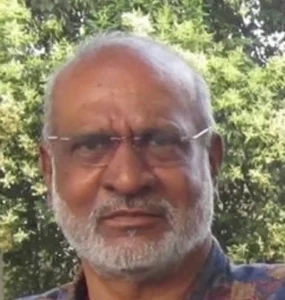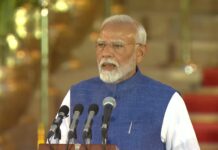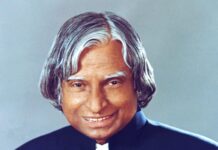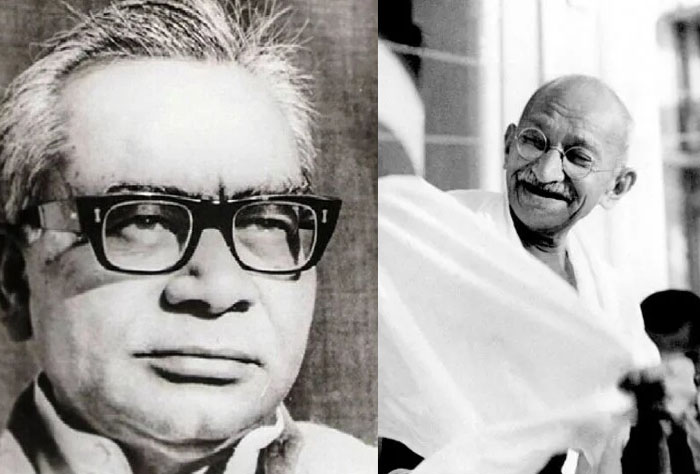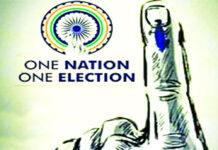— MOHAN GURUSWAMY —
I have been observing the growth of religiosity during the past few years. New temples and mosques are to be seen in every nook and corner of the country. I was recently in the rural areas of Telangana, and noticed that even the small villages now have two or three temples, when very clearly one could do. This is not just because of the wide choices of gods available to Hindus; it owes more to the fragmentation of Hindu society into myriad castes, gotras, jatis and clans.
There is also another very basic more worldly reason for this profusion of temples, mosques and churches. We are increasing seeing a profusion of extra-constitutional civic organizations that informally sanction or condone economic activity in villages and Bastos, like we have been seeing with RWA’s in urban areas, where incomes are derived from “licensing” parking agents, fruit vendors and petty services. The village committees too have discovered such income streams, quite a few of them patently illegal like sand mining, unlicensed liquor vending etc. These monies could have been used to improving every day life, but perhaps the demand for a good after life outstrips that for a good life in the here and now?
Religion is now, not increasingly a part of our politics, but even more so of our economics. Tourism now contributes as much as 9.6% of our GDP, with domestic tourism accounting for 88% of it. Last year the number of foreign tourists who came to India was about 9 million. By contrast domestic tourism totaled over 140 million visits, clearly suggesting that its implied economics are far bigger than the foreign business. It also suggests that very many of our people make several trips for religious tourism every year. While the concentration of the central governments tourism promotion efforts focus on the Delhi-Agra-Jaipur “golden triangle” the highest number of foreign tourist arrivals (20.1%) are in Tamil Nadu. Delhi draws half that. The southern states see the most foreign and domestic tourist traffic because of the number of important religious places like Tirupati, Madurai. The location of Tirupati within it makes Andhra Pradesh India’s biggest domestic tourist destination. Religious tourism is now very big business. What does this suggest? Must we be worried?
A Pew Global Attitude survey study shows that more than 25% of Indians reported having become more religious over the past 4-5 years. The trend is valid across religions and in keeping with other attitudinal surveys. Between 2007 and 2015, the share of respondents in India who perceived religion to be very important increased by 11% to 80% now. The NSSO report shows that average expenditure on religious trips has more than doubled during this period. Clearly this is a rapidly expanding business sector also given trends, the sky is the limit (no pun intended)
While the economic activity and the employment it generates is a cause for happiness all around, we must also ponder about the other ramifications of this growing religiosity. The growth of blind faith, superstition and aggressive religioneering (my two bit coinage) presents a clear and present danger to India evolving as a modernized society which values reason and tempers collective behaviors.
The building of temples or mosques is a profitable business. That’s why public spaces are increasingly usurped by unscrupulous entrepreneurs and social scoundrels to build shrines. And we know from experience that once gods and religious figures get installed in a place, they cannot be dislodged. A good share of our traffic bottlenecks are due to them.
Sant Kabirdas posed this telling question in a simple and beautiful verse: Pathar puje hari mile, to main puju pahar/ tante te chakki bhali, pis khaye sansar?
Sadly the truth now is that a stone idol (now increasingly often made of POP and plastic, sometimes from China.) offers a better rate of return (RoR) than a chakki, which calls for enterprise rather than irrational faith. Thus, with religiosity and religioneering big business now it is increasingly common to see governments promoting “religious tourism”.
Actually there is increasingly an unstated and subtle competition now implying my idol is better than yours. The Venkateshwara temple at Tirumalai is India’s biggest money-spinner. This Vaishnavite shrine attracts 40 million devotees each year. Telangana has now embarked on promoting the Yadagirigutta temple near Hyderabad to become a religious tourism draw. This is also a Vaishnavite temple, but devoted to a different avatar of Vishnu, and manifestations of that avatar – Jwala Narasimha, Gandabheranda Narasimha and Yogananda Narasimha.
Under the CPM government Kerala temple boards actually advertise the magical powers of their stone idols. Communism was supposed to make us rational and believe God was a figment of mankind’s fervid imagination. After all what else can be expected from a philosophy that derives inspiration from mummified corpses in the Red Square and Tiananmen?
Jawaharlal Nehru, our first PM and foremost founding father of the new India then contemplated the new India to be guided by reason and infused with the scientific temper. Instead we are now increasingly a people driven by dogma and blind faith. Religion and blind faith are our biggest fault lines and the cause of much social friction and breakdown of orderly public behavior and order.
To make a point Nehru never visited religious places lest it be seen as an endorsement. Even Indira Gandhi who was a bit of a closet believer eschewed visiting temples. But her grandson Rahul Gandhi quite cheerfully hops about from temple to temple, sports a tikka and also admits to wearing a janevu. He even proclaims he is a Shiv bhakht. Amit Shah follows him with his own temple hopping. Despite their fierce opposition to each other, they are united by their religious humbug. Rahul Gandhi and Amit Shah are politicians soliciting votes by pandering to presumed religious sentiments.
And lets not forget about the ringing endorsement by Narendra Modi of the convicted rapist Ram Rahim Singh as he solicited his political endorsement? We now increasingly see our constitutional authorities and prominent personalities making highly publicized visits to places of faith but also of unreason. The year before Prime Minister Narendra Modi and former President Pranab Mukherjee visited the Hindu shrines at Kedarnath and Badrinath in Uttarakhand. Former President Kovind very publicly offered puja at the Venkateshwara temple at Tirumalai. He even allegedly suffered humiliation at the Jagannath temple in Puri. The PM at Kedarnath or Ayodhya or someone else at Ajmer Sharif is an endorsement to a service, not any different from Sharukh Khan holding a Coke bottle.


